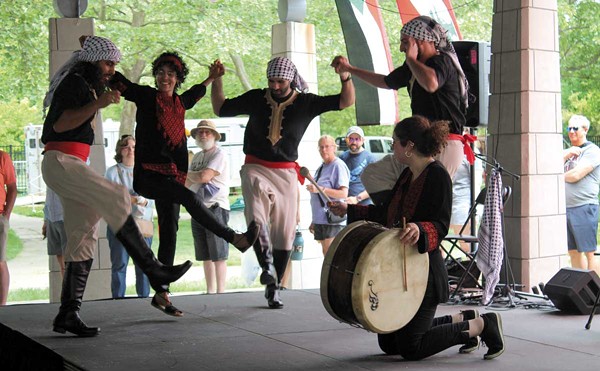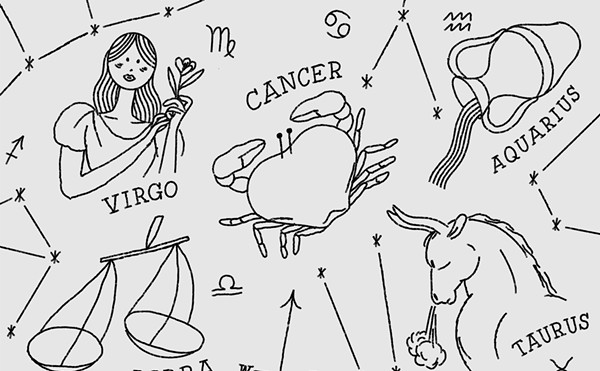These stories of love and heartbreak, suffering and survival on the Underground Railroad are rooted in oral history traditions. But with Betty DeRamus' deft touch for prose and journalistic attention to historical records, they flourish as a modern, relevant book, Freedom by Any Means: Con Games, Voodoo Schemes, True Love and Lawsuits on the Underground Railroad.
The former Detroit News writer saw her first book, Forbidden Fruit: Love Stories from the Underground Railroad, hit shelves in 2005. Combined with several "leftovers" from that project and her knowledge of more untold — or at least not fully or recently told — tales, DeRamus tackled the second book, which is a broader look at the slavery experience.
The stories of escape and capture traverse the United States, and some pass through or land here in Michigan. Detroit appears in stories of the German-speaking congregation at downtown's St. John's-St. Luke's Evangelical Church and its staging of fake funerals. When the procession would reach the Detroit River, hidden fugitive slaves would emerge from hiding in leather caskets and plunge in the currents, making their way to freedom in Canada.
We recently talked with DeRamus about her writing.
METRO TIMES: How is your writing different from other work on the era of slavery and the Underground Railroad?
DERAMUS: Many of the books I've read on that subject only talked about what, to me, seems to be only one side of the experience: the agony, the ordeals, the pain, the whippings. In my books, I'm trying to describe American history in a more complete way, talking about achievements as well as ordeals, triumphs as much as trials. Fugitive slaves literally showed us the way when you're talking about survival and survival strategies.
MT: And what are some of those survival strategies?
DERAMUS: You see people banding together and forming networks to help each other, you see people pooling their talents and you also have a lot of people working together as families. They didn't just rescue themselves. They didn't just rescue spouses. John Bowley, in the first story, after almost miraculously rescuing his wife and children from a Maryland auction block, was involved in a couple of other ventures where he rescued nephews. People were assembling their families, turning them into a survival unit. They were working in concert. You have people doing all kinds of things that sound very contemporary when you compare it to what's happening right now — a lot of them were coming up with very successful ways to, as we used to say, make a way out of what seemed like no way.
MT: Who are you writing for?
DERAMUS: My approach is much like sitting on a back porch talking to friends and neighbors as someone who is relating a story in that oral tradition. But, obviously, if you're writing a book that purports to be history, you have to document the oral history and deal with possible skepticism, especially with the first story. I was very conscious that somebody might be reading and say, "Give me a break. This could not have actually happened." It wasn't a conscious technique, it was just filling in the blanks and making sure it was not only, I hope, an entrancing story but a credible one. There are sources in the back of the book. I hope it's oral history buttressed by hard facts. Isn't that what journalists do?
MT: How do your collections contribute to the body of work on African-American history in the United States?
DERAMUS: I'm including some stories that I don't think anyone has yet looked at, like "Aunt Sally's Coffee House." The only thing we have about her was a 19th century account. I don't think anyone else ever went back and tried to fill in some of the details. I consider that new ground. The story of John L. Brown, the South Carolina man who was almost hanged, had been forgotten as near as I can tell. I made a number of inquiries among historians and no one seemed to know it anymore. Even though it was apparently very big in its day, it has fallen through the cracks, so I've kind of resurrected it.
MT: So there is still plenty of new material out there about that shameful era?
DERAMUS: Yes, and it's still very much being written. So much was either lost or not considered important at the time or not recorded or left in the courthouse and never returned to. Anybody who's doing any work now is still at the point where you're rescuing things or putting things together.
MT: Does the history tell us anything about race relations today?
DERAMUS: There are lots of ironies there, aren't there? We have such a reputation in southeast Michigan for being racially divided, but here you see that we have another legacy as well. There was a time when Michigan had a different reputation. When some numbers of white and black people worked together in different parts of the state. It's a legacy that we need to keep alive.
Excerpt from Freedom By Any Means: Con Games, Voodoo Schemes, True Love and Lawsuits on the Underground Railroad, by Betty DeRamus
It seemed too late for love and almost too late for the law. The spy had done his job so well it looked too late for anything except black men and women trying to fight off their former masters with three-legged stools. Runaway slave Perry Sanford managed to crawl onto a roof and escape the raiders who were prepared to shoot their way through three states to capture runaways from Kentucky. But a black woman hiding in a cornfield surrendered so she could soothe the crying child she’d left behind.
This all happened not far from a southwestern Michigan village now called Cassopolis, a place that had a jail before it had a courthouse and was known mostly for distilling whiskey and packaging pork. In the summer of 1847, the two sides in the war between slavery and freedom came together at the courthouse in Cassopolis and seemed ready to wrestle each other to the ground.
On one side stood several hundred free blacks, runaway slaves, humanitarian whites and members of the Society of Friends, a religious group known as Quakers who believed that God spoke directly to men’s souls and guided them with an inner light. Most people in the freedom-supporting crowd carried clubs and farming tools. A few also came armed with the knowledge of a legal maneuver they hoped might be crafty enough to free the slaves who had just been captured.
On the other side stood a posse of slave raiders from Kentucky who had ridden into southwestern Michigan with the story that they were selling a new kind of washing machine. Armed with a map produced by one of their spies, which pinpointed the hiding places of runaway Kentucky slaves, they had managed to recapture nine or ten Kentucky fugitives. They carried carbines, pistols, pointed knives known as dirks and equally pointed bursts of anger.
The Quakers loved peace, hated war and had evolved into antislavery advocates. All the same, it might not have taken all that much to start a brawl between some not-so-peaceful members of the anti-slavery crowd and the slave raiders from Kentucky on an August day in Cass County, Michigan. Not when four former slaves were hatching a plot to ambush and shoot the invading slave catchers. Not when a Baptist minister and slave catcher from Kentucky had snatched a free-born baby and tried to claim it as a slave. Not when another slave raid in the area soon would break the heart of fugitive slave David Powell by seizing his wife, Lucy; and not when a fugitive name Aaron Roy would disappear completely from Cass County, leaving behind a note to his wife saying he expected to be killed.
Sandra Svoboda is a Metro Times staff writer. Contact her at 313-202-8015 or [email protected]




